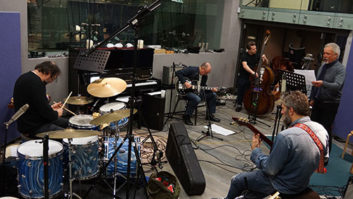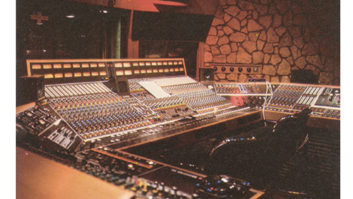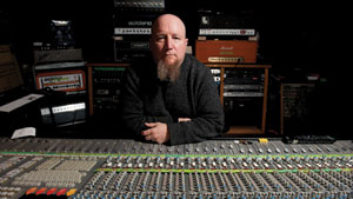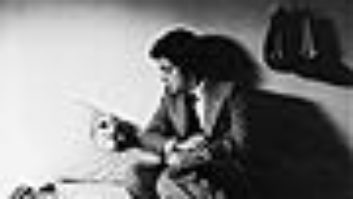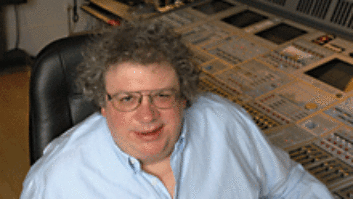By 1981 I had acquired pretty good street cred as a guitarist, playing with the likes of Automatic Man, Narada Michael Walden, Pat Travers and even a “supergroup” that featured Steve Winwood, Michael Shrieve, Al DiMeola, Junior Marvin, and Phil Manzanera. I was feeling pretty good about myself, but all I really wanted was to meet and work with Andy Johns. I wanted to find out how we could get the famous “When the Levee Breaks” drum sound on the upcoming Hughes/Thrall album. What I got instead was a 30-year friendship with someone who became a mentor, father figure, coach, big brother, little brother and, most important, a lifelong best friend.
Andy was absolutely passionate about music, and he was brilliant at getting a band to play in the pocket. There was a song on the Hughes/Thrall album titled “I Got Your Number.” Glenn (Hughes) and I weren’t that solid playing the eighth notes on the basic track, so he set us both up in the control room and had us re-track it at the same time while he conducted. He got us in his eighth-note dance and put us in sync, punching us both in and out together until he got the completed track; that’s what you hear on the record.
Remember, he was from a time before Pro Tools, so if the drummer sucked, he wasn’t going to be playing on the album. I have been in the room when a player that wasn’t concentrating or following instructions would frustrate Andy. In his best Winston Churchill voice, he would say over the talkback in no uncertain terms, “Play as told!” We would always laugh about it later, of course.
If he loved and respected your playing or singing, he made you feel like the best musician in the world. I often thought I was his favorite guitar player, but I’ll bet all the guitar players that he loved working with would say the same thing. He made me better. He would sing me ideas and literally stand in front of me and conduct using arm gestures to express the flow of the parts. To this day, I still picture him in my mind, waving his arms, whenever I track.
I remember one particular session after Hughes/Thrall broke up, when I hadn’t played for a couple of months and was feeling dejected and vulnerable. Andy tapped into that, having me play on a slow song. So I played a very sad-sounding solo. I walked back into the control room after the take and saw tears streaming down his face. He gave me a big hug and told me the solo was incredible. He felt music. Deeply. And he was such an inspiration. He lifted me out of my funk because of that session and inspired me to get back in the game. I was touring again in a few weeks.
The last full project I did with Andy was in 1985 for the artist (and attorney) Al Staehely. We worked on the album for six or seven months living together on a 2,500-acre ranch an hour and a half north of Houston. We used studio owner John Moran’s mobile truck that had one of the first Sony 3324 tape machines in the country. We are in the middle of this massive ranch owned by Houston real estate mogul and rancher Bunker White, living in a beautiful octagon-shaped four-story house doing the cowboy version of what Andy did with The Rolling Stones in the south of France recording Goat’s Head Soup.
All we did every day, all day, was record music and entertain ourselves. When we weren’t recording we would be taking moonlit midnight walks in the fields with the dogs and talking about the meaning of life and music, aided by a few chemical enhancements. (C’mon! It was the ’80s!) Andy was a great cook, and on occasional Sundays he would make Shepherd’s Pie or a roast beef, and we would all eat like a good rock ’n’ roll family should. Then back out to the truck.
Andy was fearless and would try anything in the studio, adapting to whatever recording environment he was working in. That’s how he came up with the John Bonham drum sound—who at that time would record drums in a stairwell? At one point during the mix stage at the ranch, Andy got so frustrated with the sonics of the truck that he decided to set the JBL speakers up outside on Anvil cases to get a different perspective. The photo of Andy and the Brahma bull is from the first day of that setup. That shot was not posed, and as you can see he is totally indifferent to the fact that there is a massive animal standing right next to him that could kill him in a New York second. All he cared about was getting the mix right. The way that Andy looks in that shot is how I will always envision him: Strong, defiant, focused and, of course, fearless.
I moved to New York, and in the years following my transition from a full-time guitar player to a full-time engineer/producer, Andy and I would talk on the phone every so often like no time had passed at all. I would pick his brain for engineering tips or just have him tell stories of the true glory days of recording. I will miss him till the day I die, and the void will never be filled. Rest well, my dear friend.
